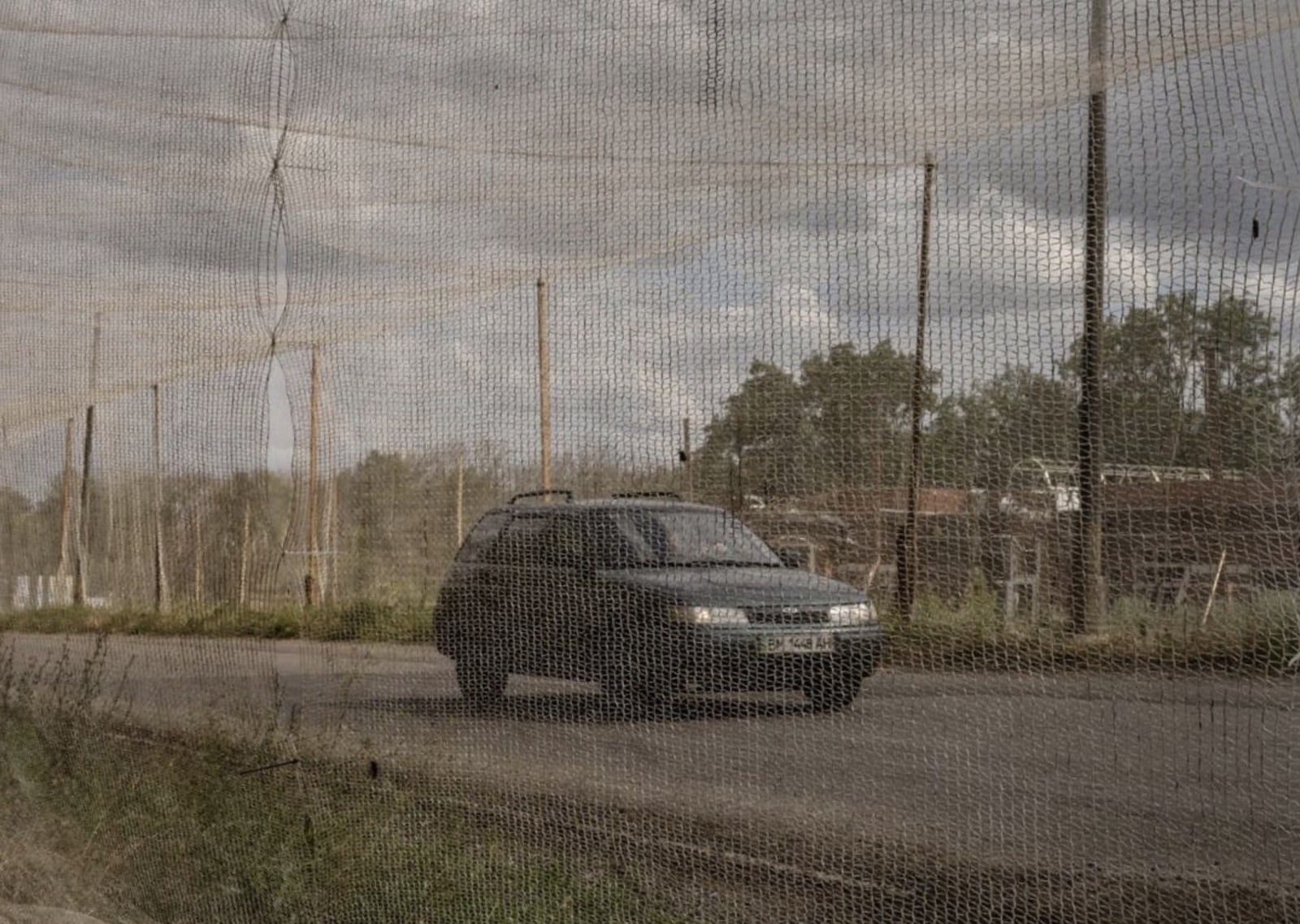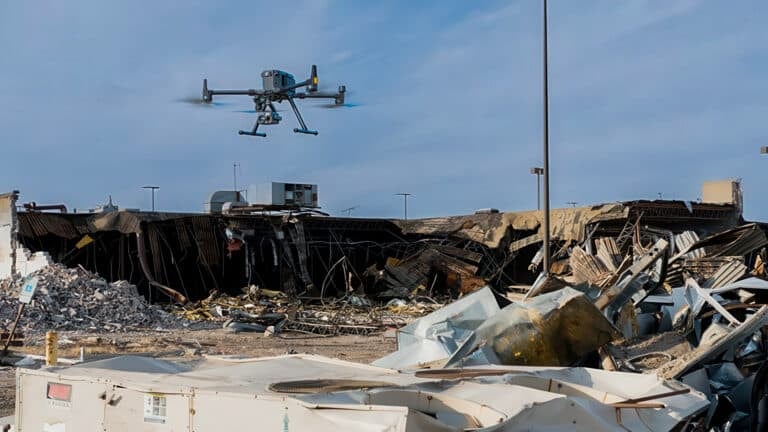French Fishing Nets Become Anti-Drone Barriers Protecting Ukraine From Russian FPV Attacks

Discarded fishing nets from Sweden and France’s Brittany coast are finding new purpose on Ukraine’s frontlines, where they’re being deployed as low-tech anti-drone barriers against Russian attack drones. The Breton charity Kernic Solidarités has delivered 280 kilometers (174 miles) of horsehair netting to Ukraine—transforming what would be 800 tons of annual waste into frontline protection for soldiers and civilians.
The deep-sea nets, once used to trawl monkfish from the ocean floor, now stretch across roads, bridges, and hospital entrances to entangle the propellers of Russian first-person-view drones. It’s a simple but remarkably effective solution to a threat that has Ukraine facing more than 500 drone attacks daily.
From Brittany’s Ports To Ukraine’s Battlefields
Christian Abaziou, 70, who handles logistics for Kernic Solidarités, described the initiative’s origins as he sorted through nets at Roscoff port in western Brittany’s Finistère department.
“Over the last two years the war has mutated. Before we didn’t even think about drones, but now it’s a drone war,” Abaziou told The Guardian.
The charity has transported two lorry convoys carrying humanitarian aid and nets over 2,300 kilometers (1,429 miles) to Ukraine’s border with Poland. The first shipment headed to Zaporizhzhia in southern Ukraine, while the second went to Kherson—both cities facing relentless drone strikes.
Gérard Le Duff, 63, president of Kernic Solidarités and grandson of a Breton fisher, explained the practical appeal.
“We don’t have a lack of fishing nets in this region. It’s a problem to know what to do with them as a couple of the companies that recycle them have closed. If they need them to create anti-drone walls and save lives in Ukraine, they can have them,” Le Duff said.
Why Horsehair Nets Work Against Drones
The specific type of netting matters. These aren’t ordinary fishing nets—they’re horsehair nets designed for deep-sea monkfish trawling, built to withstand powerful fish that hit with force similar to drone impacts. The nets typically last 12 to 24 months before being discarded, creating roughly 800 tons of waste annually in Brittany alone.
“The Ukrainians have told us they don’t need any old nets. They have been sent quite a few that are of no use. The nets we are sending are made of horse hair and used for deep-sea fishing to catch monkfish which are quite powerful and hit the nets with a strength similar to that of a drone,” Abaziou explained.
Ukrainian forces stretch the nets between poles to create protective tunnels over roads and infrastructure. When Russian drones—typically small, cheap FPV (first-person-view) quadcopters packed with explosives and piloted by remote control up to 25 kilometers (15.5 miles)—fly into the netting, their propellers become entangled. The effect has been compared to spiders catching flies in a web.
Combat-Proven Protection Across Multiple Applications
The nets’ battlefield applications have expanded rapidly since deployment began.
“At first they were used by doctors protecting medical camps near the frontline but now they are being used on roads, bridges, the entrances to hospitals… it’s astonishing that something so simple works so well,” Abaziou noted.
Iryna Rybakova, spokesperson for Ukraine’s 93rd Mechanised Brigade, confirmed that anti-drone net tunnels are being installed across the Donetsk region, approximately 75% of which is now reported under Russian occupation and control. She acknowledged that enemy drone pilots are increasingly finding ways to breach the netting, adding that “Nets are not a panacea. They are just one element of protection against drones.”
Ukrainian troops also use pieces of netting dropped from their own drones to disable enemy drones mid-air—a tactic that demonstrates the versatility of this low-tech countermeasure.
Growing International Fishing Community Support
The solidarity movement extends beyond France. According to reports, hundreds of tons of old nets have been donated by fishers in Sweden and Denmark, creating a pan-European supply chain of anti-drone materials.
Jean-Jacques Tanguy, former president of the Finistère fisheries committee, said local fishers take pride in contributing to Ukraine’s defense. “They are proud to know their used material is going to help save lives,” he told AFP.
The Ukrainian ambassador personally visited Brittany to thank the coastal communities for their contributions—a gesture that resonated deeply with the volunteers.
“The fact that those in the fishing industry the other side of Europe are sending nets to help them defend themselves has brought a few tears to their eyes,” Abaziou said.
Funding Challenges Threaten Future Deliveries
Despite the initiative’s success, financial constraints are limiting further shipments. Kernic Solidarités, which operates with approximately 20 volunteers, has exhausted its budget for convoy operations after delivering two major shipments in 2025.
“We will help get the nets and load them but we don’t have the budget to continue running convoys ourselves,” Abaziou stated.
Discussions are underway for Ukraine to send lorries to Brittany to collect the nets directly, though this would require coordination and funding on the Ukrainian side.
DroneXL’s Take
This fishing net initiative perfectly illustrates what we’ve been documenting throughout Ukraine’s drone war evolution: the most effective countermeasures aren’t always the most expensive or technologically sophisticated.
We’ve extensively covered Ukraine’s interceptor drone programs costing $2,500 to $6,000 that hunt down $35,000 Shahed drones while preserving million-dollar NASAMS missiles. We’ve reported on AI-powered Sky Sentinel turrets at $150,000 versus $1.1 billion Patriot systems. We’ve documented “Spider-Man” drones that fire nets to capture Russian reconnaissance drones mid-flight.
But horsehair fishing nets might be the most elegant cost-benefit solution yet. Zero production cost. Solves an environmental waste problem. Requires no electricity, no sophisticated targeting systems, no specialized training. Just poles, netting, and basic installation—protecting roads, hospitals, and frontline positions from drones that cost thousands of dollars and months of enemy logistics to deploy.
The irony isn’t lost on us that Russia has also been constructing similar net tunnels along key roads in occupied Donetsk to protect their own troop movements from Ukrainian FPV drones. Both sides have recognized that when you’re facing 9,000 drones deployed daily—as Ukraine currently does—you need layered defense that includes passive barriers alongside active countermeasures.
This story also exemplifies grassroots international support making tangible battlefield impact. While NATO debates procurement contracts and politicians argue over aid packages, 70-year-old volunteers in Brittany are loading fishing boats’ discarded nets into trucks bound for Ukraine. It’s the same spirit driving Ukraine’s $43 billion domestic defense investment and the direct NATO partnerships we’ve tracked with the UK’s Project OCTOPUS and Netherlands’ €200 million joint production deals.
The Brittany fishing community has created a blueprint that other coastal regions could replicate. With an estimated 800 tons of nets scrapped annually just in this one French region, the global potential is massive. Someone should start mapping fishing ports worldwide and connecting them with Ukrainian logistics coordinators before winter weather makes drone attacks even more devastating.
What do you think? Should more coastal communities worldwide be organizing similar fishing net collection efforts for Ukraine? Share your thoughts in the comments below.
Discover more from DroneXL.co
Subscribe to get the latest posts sent to your email.
Check out our Classic Line of T-Shirts, Polos, Hoodies and more in our new store today!

MAKE YOUR VOICE HEARD
Proposed legislation threatens your ability to use drones for fun, work, and safety. The Drone Advocacy Alliance is fighting to ensure your voice is heard in these critical policy discussions.Join us and tell your elected officials to protect your right to fly.
Get your Part 107 Certificate
Pass the Part 107 test and take to the skies with the Pilot Institute. We have helped thousands of people become airplane and commercial drone pilots. Our courses are designed by industry experts to help you pass FAA tests and achieve your dreams.

Copyright © DroneXL.co 2025. All rights reserved. The content, images, and intellectual property on this website are protected by copyright law. Reproduction or distribution of any material without prior written permission from DroneXL.co is strictly prohibited. For permissions and inquiries, please contact us first. DroneXL.co is a proud partner of the Drone Advocacy Alliance. Be sure to check out DroneXL's sister site, EVXL.co, for all the latest news on electric vehicles.
FTC: DroneXL.co is an Amazon Associate and uses affiliate links that can generate income from qualifying purchases. We do not sell, share, rent out, or spam your email.


















